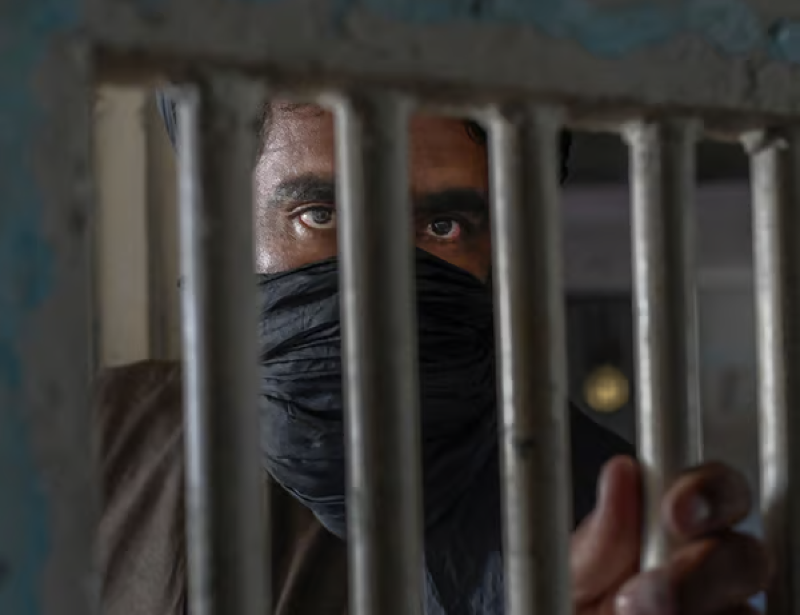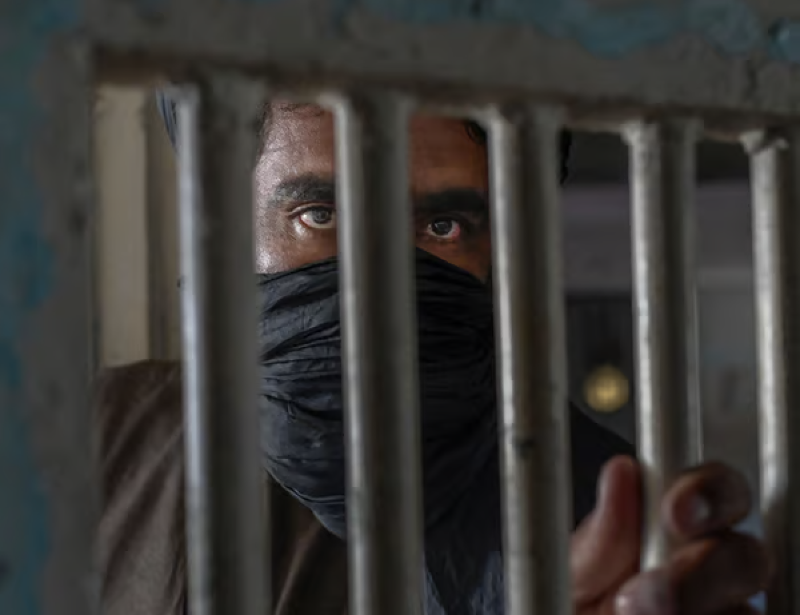How a journalist became the Taliban's portrait artist

Hi everyone! Mathew Ingram here. As many of you probably know, I am able to continue writing this newsletter in part because of your financial help and support, which you can do either through my Patreon or by upgrading your Ghost subscription to a monthly contribution. I enjoy gathering all of these links and sharing them with you, but it does take time, and your support makes it possible for me to do that. And I appreciate it, believe me! If you like this newsletter, please share it with someone else, and thanks for being a reader.
Afghanistan’s rulers planned to execute a journalist then found out he could draw

From The Economist: "One winter morning in 2022 I found myself being pushed, blindfolded, into a Taliban interrogation room in Kabul. A guard I couldn’t see shoved me into a chair. I heard the door close, then nothing. I had no idea why the Taliban had taken me. One possibility was that they might be trying to use me as a bargaining chip in their dealings with the West. My speculation was interrupted by a voice to my right telling me, in English, to remove my blindfold. When I did so I saw a powerfully built man sitting at a desk. He wore a black skullcap, and a bulky camouflage jacket which made him look even larger. For the next hour the man grilled me, trying to get me to admit I was a spy. Had I been to Iran? Which was my favourite Bond film? He wrote down my responses. Suddenly he looked up from his notes and said: “You’re going to be hanged.”
Scientists made the skin of mice transparent using a common food dye

From Scientific American: "In mere minutes, smearing mice with a common food dye can make a desired portion of their skin almost as transparent as glass. In a study published in Science, researchers spread a solution of the dye tartrazine, a common coloring for foods, drugs and cosmetics, onto living mice to turn their tissues clear—creating a temporary window that revealed organs, muscles and blood vessels in their body. The procedure—a new form of a technique known as “optical tissue clearing”—has not yet been tested in humans, but it may someday offer a way to view and monitor injuries or diseases without the need of specialized imaging equipment or invasive surgery. The fats and proteins in skin typically have higher refractive indexes than the water, which creates a contrast that you can’t see through. In the study, Ou and his colleagues looked for light-absorbing molecules that could make the various refractive indexes within the layers of skin more similar—reducing the amount of light scattered throughout."
Can the stranded Boeing Starliner astronauts vote from the space station?

From Ad Astra: "In 1997, Texas passed a law that allowed astronauts to vote from space. NASA’s astronaut program is based at Johnson Space Center in Houston, so that’s where the astronauts live, work, and are registered to vote. Some astronauts are registered to vote elsewhere, and NASA has worked with their local county election offices as well. In order to vote from space, astronauts have to fill out what’s called the Federal Post Card Application or FPCA. This is the tricky part though: For astronauts, it HAS to be submitted in person before departure. And it’s likely Butch and Suni didn’t go through this process because they didn’t know they’d be in space come November 5. After the astronaut on the ISS completes their ballot, it’s sent back to NASA through the Near Space Network, which is managed out of NASA Goddard in Maryland."
Why top Olympic athletes use baking soda to boost performance

From Outside: "It was a very fast Olympics. Half of the distance running events—six of the 12 men’s and women’s races between 800 meters and the marathon—saw new Olympic records. The newest supershoes had something to do with it, and the fancy new track probably did too. There’s also a new, more aggressive approach to racing that seems to be spreading. But there’s something else, too, according to Canada’s Marco Arop, whose silver medal performance in the 800 meters, a mere hundredth of a second behind Emmanuel Wanyonyi of Kenya, made him the fourth fastest man in history. Just a week before the Olympics, Arop decided to try something new—something that he’d never tried before but that, according to an anonymous Olympic runner quoted in the Telegraph, at least 80 percent of elite runners are now using: sodium bicarbonate."
The Cold War was the peak of offbeat Arctic research

From Undark: "At the height of the Cold War in the 1950s, as the fear of nuclear Armageddon hung over American and Soviet citizens, idealistic scientists and engineers saw the vast Arctic region as a place of unlimited potential for creating a bold new future. Greenland emerged as the most tantalizing proving ground for their research. Scientists and engineers working for and with the U.S. military cooked up a rash of audacious cold-region projects — some innovative, and most quickly abandoned. They were the stuff of science fiction: disposing of nuclear waste by letting it melt through the ice; moving people, supplies, and missiles below the ice using subways, some perhaps atomic powered; testing hovercraft to zip over impassable crevasses; making furniture from a frozen mix of ice and soil; and even building a nuclear-powered city under the ice sheet."
How traditional Romanian culture created a whirlpool for washing clothes
Traditional Romanian washing machines used the flow of rivers to create a whirlpool effect. pic.twitter.com/TgkthXj6GG
— Historic Vids (@historyinmemes) September 8, 2024
Acknowledgements: I find a lot of these links myself, but I also get some from other newsletters that I rely on as "serendipity engines," such as The Morning News from Rosecrans Baldwin and Andrew Womack, Jodi Ettenberg's Curious About Everything, Dan Lewis's Now I Know, Robert Cottrell and Caroline Crampton's The Browser, Clive Thompson's Linkfest, Noah Brier and Colin Nagy's Why Is This Interesting, Maria Popova's The Marginalian, Sheehan Quirke AKA The Cultural Tutor, the Smithsonian magazine, and JSTOR Daily. If you come across something interesting that you think should be included here, please feel free to email me at mathew @ mathewingram dot com



